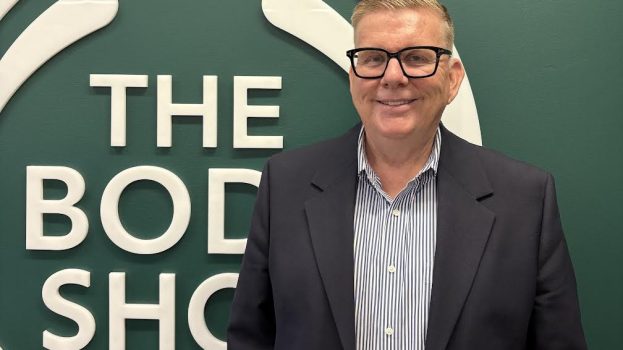 The DINKs phenomenon – also known as the playful acronym that stands for “double-income, no kids” – is a societal shift that challenges the traditional nuclear family structure. Lately, it’s been making the rounds on social media, particularly on TikTok, with couples promoting the fact that they have chosen to opt out of the family planning narrative in favour of personal fulfillment, career aspirations and financial freedom.
The DINKs phenomenon – also known as the playful acronym that stands for “double-income, no kids” – is a societal shift that challenges the traditional nuclear family structure. Lately, it’s been making the rounds on social media, particularly on TikTok, with couples promoting the fact that they have chosen to opt out of the family planning narrative in favour of personal fulfillment, career aspirations and financial freedom.
And who can blame them? Stats Canada reports that, for a two-parent, middle-income family with two children, raising one costs about $293,000 (an average of $17,235 per year).
Families with higher earnings and without the financial responsibilities linked to raising children typically possess greater discretionary income. Couples with dual incomes and no children often have the capacity to accumulate more savings for their retirement compared to those who have parental obligations. The DINKs lifestyle choice allows consumers the freedom to allocate resources differently, shaping a life that suits their desires.
On TikTok, #DINKS are sharing videos of themselves, well, living their best lives. And sometimes, that includes a fun date at Costco like the one TikToker Kate (@engelthang), who refers to herself as “Former bride, now a DINK,” and her husband shared. Their viral video, which has 11.8 million views, starts with her asking, “Why is nobody talking about being DINKs? Today, we went to Costco and since we don’t have kids to feed, we’ve got plenty of money to spend on goodies!” They then go through their shopping journey – sharing their favourite brands – and leave with $252 worth of treats. A similar video shows TikToker Belle (@bellerodolfo) and her partner on a shopping spree at IKEA. The couple label their content “A day in the life of a DINK queer couple,” and go through the store displaying their likes and their maybes. Ultimately, it’s clear to their followers that they’re enjoying their childfree days.
But neither the term DINKs nor the lifestyle is new. In fact, it was coined in the ‘80s when the young urban professional culture became a big and attractive trend. It has recently made a resurgence, partly as the result of a rocky economy, says Janessa Bishop, VP and digital communications practice lead at Kaiser & Partners. According to a 2024 survey by Pollara Strategic Insights, 82% of respondents believe Canada is in a recession.
“DINKs first emerged when more women began entering the workforce, but it’s making a comeback with the housing crisis and high inflation rates,” echoes Johanna Faigelman, founding partner and CEO of Human Branding, a market research consultancy that pioneered the use of applied anthropology in business.
DINKs, however, are’t necessarily choosing this lifestyle in order to splurge on themselves. With the increasing cost of living, many just want financial security rather than freedom, Faigelman explains. Many DINKs are actively saving money in order to either have financial stability or postpone having children at a later time.
“For millennials and Gen Z, things like owning a home or starting a family may feel out of reach in this economic climate. These younger generations are starting to reshape conventional norms and are considering issues like climate change before having children,” explains Bishop.

In Canada, DINKs households increased by 30% in the last ten years, according to Gitnux, an independent marketing platform. And while they may have more money, understanding their motivations is key. Consumer interests differ for this group, and so should the way brands speak to this growing demographic. “Do your research. What motivates their purchasing decisions? What kinds of products, services and experiences do they care about? The DINK community is not all one and the same,” Bishop says.
Additionally, when you’re a DINK, you are more likely to enjoy the luxury of time. With no childcare responsibilities, these couples can structure their finances and time according to personal preferences without the constraints of a rigid schedule or demands. “Some of them are spending hundreds on snacks, others are planning lavish vacations and some are putting one income into savings for the future. It’s important to segment this audience even further and identify subsets within this group. As an example, there’s already DINKWADs (double-income, no kids, with a dog) and SINKs (single-income, no kids).”
For marketers, when it comes to this cohort, Faigelman has a few concepts to keep in mind. “Recognize that financial stability is key to them, so be careful about treating their pursuits as frivolous. Their notion of ‘healthy selfishness’ (respect for one’s own happiness) is a very interesting one for marketers. But watch out, as they may become parents at some point so the idea is to help them maximize this time before they enter the next life stage. And finally, unique experiences are key to this group as consumers, they value this above all else.”
And for those brands that want to delve deeper into the phenomenon and see for themselves, Bishop suggests, “using TikTok as a search platform with prompts like ‘A day in the life of a DINK’ or questions like ‘What do DINKs spend money on?’ This research can help inform your brand’s marketing approach and message.”























